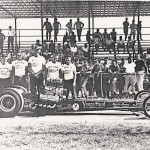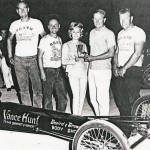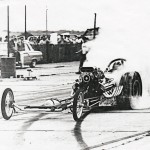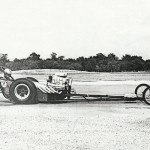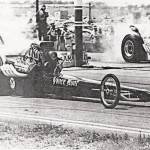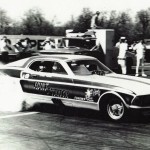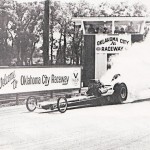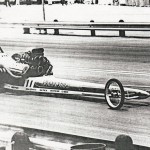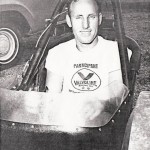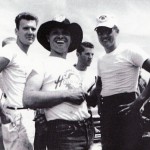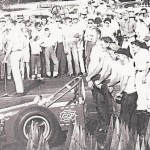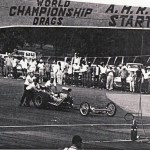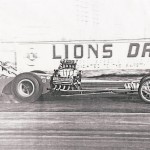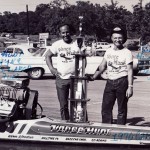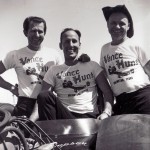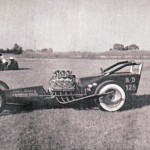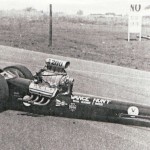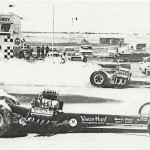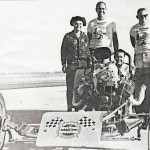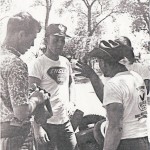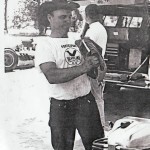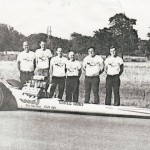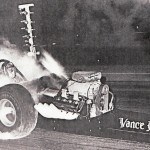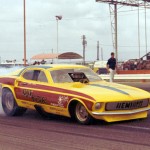Vance Hunt
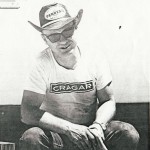 Vance Hunt was a name synonymous with Top Fuel racing in the southwest from 1960 to 1971. Born in Chickasha, Oklahoma in 1932, Vance and his family moved to Arlington, Texas in 1942. In 1946, he got his driver’s license and first car at the age of 14. That’s when drag racing was just getting started in many parts of the country. In those days, according to Hunt, “We raced any place we could.” Boy, doesn’t that sound familiar?
Vance Hunt was a name synonymous with Top Fuel racing in the southwest from 1960 to 1971. Born in Chickasha, Oklahoma in 1932, Vance and his family moved to Arlington, Texas in 1942. In 1946, he got his driver’s license and first car at the age of 14. That’s when drag racing was just getting started in many parts of the country. In those days, according to Hunt, “We raced any place we could.” Boy, doesn’t that sound familiar?
During the 1950s, Vance also became a member of the North Texas Timing Association, a group that ran drag races at Caddo Mills, Texas, on the first weekend of each month. Following high school, he attended what is now known as University of Texas-Arlington (UTA). He also served in the Naval Reserve from 1951 to 1955. In 1954, Vance went to work at the new GM plant in Arlington, where he spent the next 35 years building automobiles. Though he won his first trophy in 1955 while driving a ‘54 D/Stock Oldsmobile, it wasn’t until around 1957 when he took a trip to Wichita Falls, Texas, to see Speed Sport, Cook & Bedwell, and Don Garlits run that Vance made up his mind as to a future in drag racing endeavors. Fuel racing would be a part of it!
In 1956, he acquired a 1955 Chrysler 300 hemi motor and a 1941 Ford Coupe and spent most of 1957 trying to get this engine/chassis combination to work. But it was to no avail. The final time out with the car produced a both a broken La Salle transmission and rear axle. Hunt and friend Ed Mabry met and decided to put Hunt’s hemi-Chrysler in Mabry’s light dragster chassis. The results were encouraging to say the least. They entered the NHRA Nationals at Oklahoma City in 1958 and were awarded a trophy for setting the new B Gas Dragster speed record of 130 miles-per-hour. In 1959, the two decided to move up to A Gas Dragster. They installed a supercharged 392 Chrysler in a new chassis and raced as Hunt & Mabry. They became the first single engine car to run in the nines on gasoline. In 1960 Hunt moved to a nitro-powered dragster with driver J. L. Payne.
1961 was a very good year for Hunt with J. L. Payne driving. Green Valley had just opened north of Fort Worth, Texas, and it gave them a place to race often. Payne ran a 8.23 elapsed time. It was one of the quickest Top Fuel runs that year, according Chris Martin’s Top Fuel Handbook. making the cover of Drag News the following week. Later that year, Hunt & Payne challenged Chris Karamesines for the No. 1 spot on the Mr. Eliminator List. The race was held in Tampa, Florida, and they defeated the “Golden Greek” two straight in a best of three go. The No. 1 spot was theirs.
In February of 1962, Hunt & Payne answered a challenge from Karamesines to race once again for the No. 1 spot on the Mr. Eliminator List. The Greek once again lost two straight. Also in 1962, Don Garlits built Hunt a new lighter weight chassis and with J. L. Payne at the controls, the two had what Vance called “another good year.” They also answered another challenge for the No. 1 spot on the Mr. Eliminator list. This time it was from the team of Garlits & Swingle. The race was held in Houston, Texas, and they won it two straight. Then over Labor Day at the AHRA Championship at Green Valley, they won overall Top Eliminator, defeating the legendary Greer-Black-Prudhomme car in the process.
Ted Arnold replaced J. L. Payne as Hunt’s driver in 1963. Ted and Vance raced that year until Arnold lost his life in a crash during the 1963 AHRA Nationals at Green Valley. During the ’64 season, Hunt and friend Jerry Ellis teamed up and with Ellis driving and Hunt tuning, they were a formidable duo wherever they appeared. Along the way, the team acquired a new Garlits car in 1965 and a new Woody chassis in 1966. They also held two spots on the Drag News Mr. Eliminator List at one time with two different cars. In 1967, Watus Simpson joined Hunt as partner and driver. Together they won the AHRA Nationals in Green Valley in 1967. At the 1971 March Meet in Bakersfield, California, they qualified well at no. 8 and went three rounds before losing to Don Garlits in the semi-finals. Hunt decided to retire in 1971. His final race was over Labor Day weekend at Green Valley.
Inductions into the NHRA Division 4 Hall of Fame in 1978 and the International Drag Racing Hall of Fame in 1997 were fitting tributes to someone who gave so much of his time and talent to the sport during its early years.

